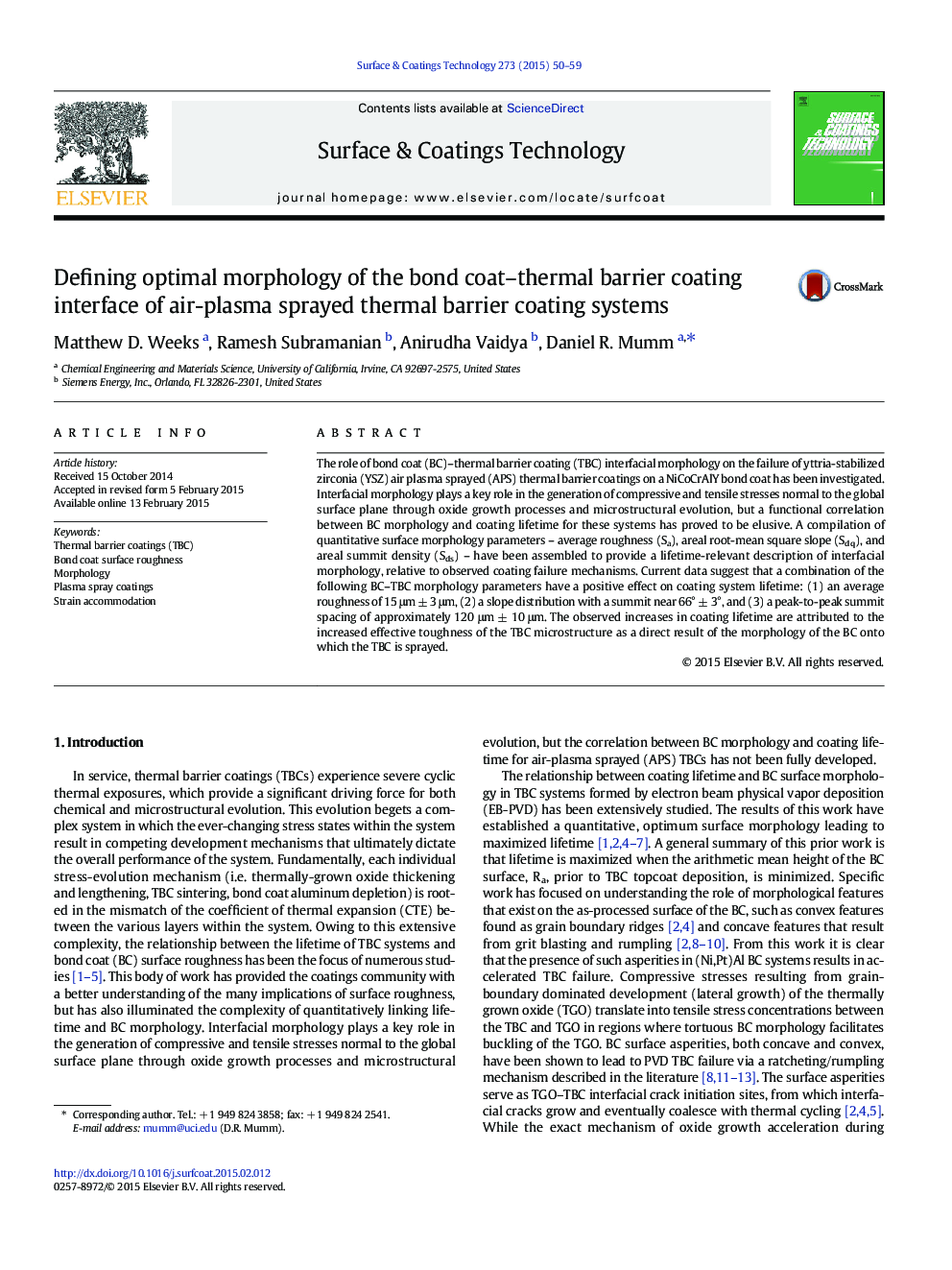| کد مقاله | کد نشریه | سال انتشار | مقاله انگلیسی | نسخه تمام متن |
|---|---|---|---|---|
| 1657057 | 1517606 | 2015 | 10 صفحه PDF | دانلود رایگان |
• The role of bond coat morphology in APS TBC system lifetime is explored.
• Lifetime-relevant BC morphology is quantified via optical confocal microscopy.
• Amplitude, slope, and summit density parameters are correlated with TBC lifetime.
• Unique combinations of roughness amplitude, slope, summit density optimize lifetime.
• TBC durability is correlated with BC–TBC interface morphological optimization.
• Specific BC morphology upon which coatings are applied affects local TBC compliance.
The role of bond coat (BC)–thermal barrier coating (TBC) interfacial morphology on the failure of yttria-stabilized zirconia (YSZ) air plasma sprayed (APS) thermal barrier coatings on a NiCoCrAlY bond coat has been investigated. Interfacial morphology plays a key role in the generation of compressive and tensile stresses normal to the global surface plane through oxide growth processes and microstructural evolution, but a functional correlation between BC morphology and coating lifetime for these systems has proved to be elusive. A compilation of quantitative surface morphology parameters – average roughness (Sa), areal root-mean square slope (Sdq), and areal summit density (Sds) – have been assembled to provide a lifetime-relevant description of interfacial morphology, relative to observed coating failure mechanisms. Current data suggest that a combination of the following BC–TBC morphology parameters have a positive effect on coating system lifetime: (1) an average roughness of 15 μm ± 3 μm, (2) a slope distribution with a summit near 66° ± 3°, and (3) a peak-to-peak summit spacing of approximately 120 μm ± 10 μm. The observed increases in coating lifetime are attributed to the increased effective toughness of the TBC microstructure as a direct result of the morphology of the BC onto which the TBC is sprayed.
Journal: Surface and Coatings Technology - Volume 273, 15 July 2015, Pages 50–59
